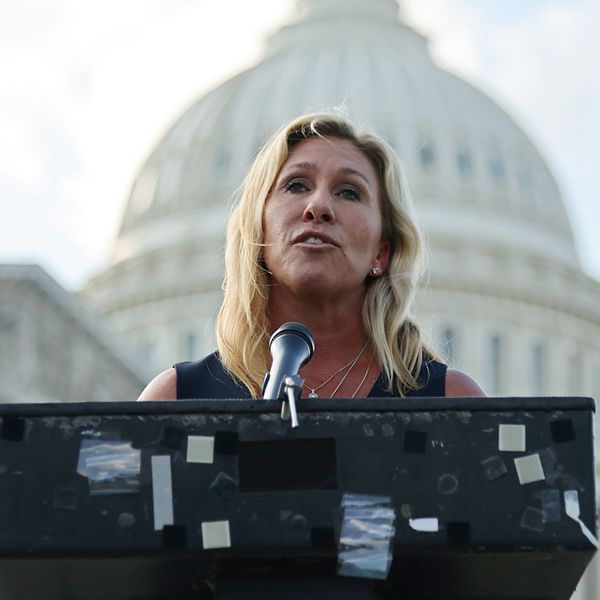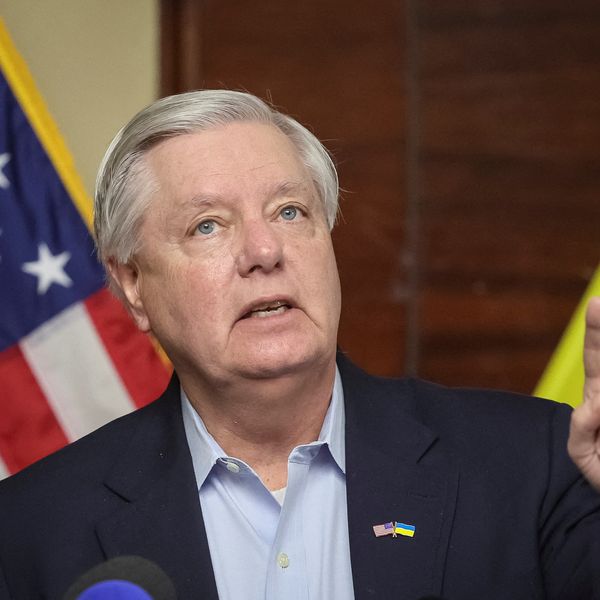The clock is ticking down on the last remaining U.S.-Russian nuclear arms control treaty, leaving open the possibility that the world’s two largest nuclear arsenals may soon be entirely unconstrained — a harrowing reality understood by most countries, which urge quick action.
The 190 states-parties to the 1968 nuclear Nonproliferation Treaty (NPT) gathered at the United Nations headquarters in New York City in August for the treaty’s month-long review conference, which had been postponed since 2020. Unfortunately, Moscow’s rejection of certain provisions on the dangerous situation at the Zaporizhzhia nuclear power plant in Ukraine in the draft final conference document derailed efforts to reach consensus on the status of and recommendations for improving progress on nuclear nonproliferation and disarmament.
The New Strategic Arms Reduction Treaty (New START), signed between the United States and Russia in 2010, is the only nuclear arms control treaty left standing after cracks in the arms control regime have emerged over the past few years. The treaty established a ceiling on the size of the U.S. and Russian strategic nuclear arsenals, allowing for no more than 1,550 warheads deployed on 700 delivery vehicles (defined as intercontinental ballistic missiles, sea-launched ballistic missiles, and heavy bombers assigned to a nuclear mission).
President Joe Biden and Russian President Vladimir Putin made the right call last year to extend New START until 2026. With little more than three years left until the treaty’s expiration, it is now crunch time for the two countries to hold formal treaty negotiations, hash out the numerous divisive issues on the table, and secure the domestic support necessary to ensure a replacement arms control arrangement. If New START expires with no follow-on arrangement, the U.S. and Russian nuclear arsenals will be with no limitations for the first time since 1972.
Fortunately, the United States and Russia have continued to adhere to the limitations on their nuclear arsenals under New START, as a regular biannual data exchange conducted on March 1, a few days after the start of the war, revealed.
About a week into the review conference, however, Moscow informed Washington that it was temporarily prohibiting onsite inspections of its nuclear weapons facilities subject to New START. Calling it an “outright provocation,” Russian officials claimed that the U.S. had announced an inspection with no prior notice, knowing that Russian inspectors would not be able to conduct reciprocal inspections due to travel sanctions currently imposed on Russia.
New START’s boots-on-the-ground inspections regime is one of the most valuable pieces of the treaty in the eyes of the military, as it provides unparalleled insights into the numbers, types, and locations of Russia’s strategic nuclear weapons that are subject to the treaty.
In New York, the NPT states-parties recognized the great import of New START and the need for Washington and Moscow to sit down at the negotiating table soon so as to maintain limits on their nuclear arsenals, especially given the current strategic and geopolitical environment. While it is understandable that the United States paused the bilateral strategic stability dialogue (a forum in which the two discuss arms control, among other topics) upon Russia’s invasion of Ukraine, the advancement of arms control — and ideally disarmament — will help to guard against the outbreak of nuclear war, which is in everyone’s interest, particularly in times of conflict.
After all, with the continued fighting in Ukraine so close to NATO allies, there are endless possibilities for unintentional or even intentional escalation, including to the nuclear level. The United States deploys an estimated 100 nuclear weapons in Europe, with about 60 earmarked for use by the alliance under NATO nuclear sharing arrangements. And, as Biden reiterated at the very start of the invasion in February, “the United States will defend every inch of NATO territory with the full force of American power.”
Although the Biden administration is reportedly planning only non-nuclear responses to the Russian use of nuclear weapons in Ukraine or around the Black Sea, a new U.S.-Russian arms control arrangement will be highly useful in minimizing risks to strategic stability and preventing an upsurge in the sizes of their nuclear arsenals.
Securing this new arrangement will no doubt be a divisive, arduous process that is very reliant on political will. To start, the United States and Russia must launch a formal bilateral arms control negotiation process (separate from the bilateral strategic stability dialogue) for a new arms control arrangement or package of arrangements to supersede New START either before or on its expiration date. While crucial, efforts to resume New START onsite inspections after Russia’s suspension should not block the beginning of formal arms control negotiations.
Washington and Moscow have long made clear that they will bring separate, differing agendas to the formal negotiating table. The baseline is for the two countries to further reduce the size of their respective strategic nuclear arsenals and to incorporate new nuclear weapon delivery systems and technologies, such as Russia’s Poseidon nuclear-powered torpedo, into the treaty limitations. The new limit for strategic nuclear warheads should be lowered from 1,550 to 1,000.
In addition, the next arms control arrangement must address non-strategic, or tactical, nuclear weapons, understood as being designed for battlefield, or limited, nuclear use and possessing shorter ranges and lower yields than strategic nuclear weapons. Washington has long wanted to impose limitations on Russia’s arsenal of an estimated 1,900 tactical nuclear weapons, all in central storage.
The United States must be prepared to discuss limitations on anti-missile defenses, given longtime Russian (as well as Chinese) concerns on this issue. Although Washington has vehemently resisted any restrictions on missile defenses, this is not the hill that arms control needs to die on. First of all, missile defense systems, particularly those meant to intercept strategic threats, do not perform reliably and effectively even under the most scripted of conditions.
Second, a numerical limit on missile interceptors, à la Anti-Ballistic Missile (ABM) Treaty, could be instituted without any adjustment to current or future interceptor force levels.
Additionally, the new deal must prohibit the development or limit the deployment of at least some types of the missiles formerly banned by the 1987 Intermediate-Range Nuclear Forces (INF) Treaty, potentially using Putin’s 2019 proposal for a moratorium on the deployment of INF missiles, though flawed, as a starting point.
At the very least, U.S. and Russian leaders should commit to maintain the central New START limitations on their respective strategic nuclear arsenals until a new arrangement, or a package of arrangements covering the many issues on each side’s agenda, is concluded.
The framework for a U.S.-Russian arms control arrangement is not perfect and will require concessions from both Washington and Moscow — but this is part of the arms control bargain, and the benefits, like the non-use of nuclear weapons in warfare since 1945, have consistently outweighed the perceived costs.














